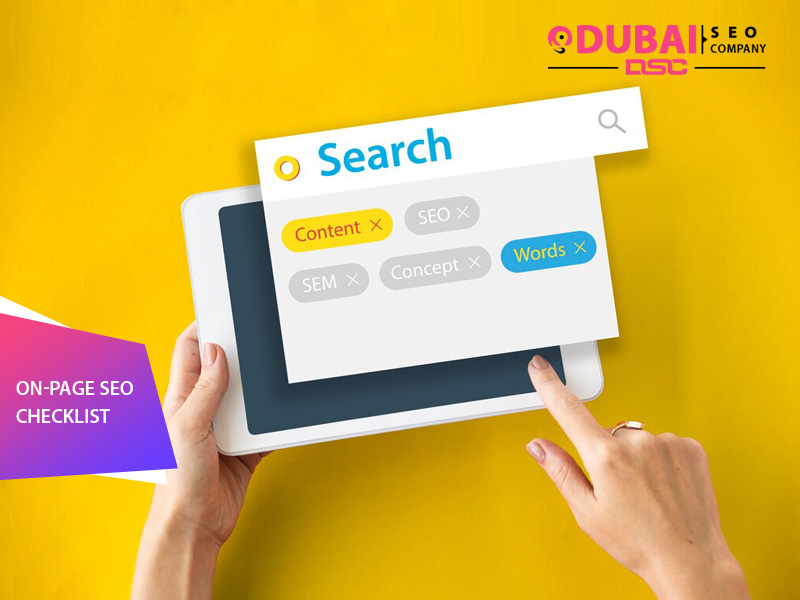On page SEO services are at the heart of any search engine optimisation strategy in the ever-changing arena of digital marketing. On-page SEO services refer to fine-tuning the content and structure of individual web pages for better rankings, better user experience, and organic traffic. Businesses need to know about on-page SEO to partner with an SEO company. They should have their optimisation efforts customised according to the new needs of the search engines.
This is a holistic checklist that would help cover most of the important points regarding on-page SEO. These steps ensure website owners and businesses have optimised pages that rank higher in search engine results and interact better with visitors.
Importance of On-Page SEO in the Digital World
If a page can deliver rich content, quick loading times, and good navigation, Google and other search engines tend to favour them. All pages on a website have to meet these criteria when it comes to on-page SEO services. While off-page SEO is dependent upon factors like backlinks, the control over on-page optimisation rests completely with the website owner.
Apart from enabling the search engines to interpret the content better, effective on-page SEO services would have pointed it towards being relevant enough for some searches. Importantly, apart from what Google algorithms keep updating their relevance towards, enhancing that of an individual page leads to enhancing the overall users’ experience.
Content writing
Content is at the heart of effective on-page SEO services. Google just loves content that is informative, well-structured, and relevant to the user’s query in search. It answers questions or solves the needs and problems of its audiences.
Keyword placement is the most organic part of content creation, yet this must be done naturally. A good SEO company will ensure that the keywords to be targeted will naturally appear in the text. It will begin with the title tag and meta description and move to headings and body texts. In fact, not stuffing keywords is crucial since search engines punish such content that focuses more on keyword density rather than user value.
It is also essential that the content is current and up-to-date. Google prefers sites that update their content regularly. This implies that the website is active and providing new information. Always try to include relevant internal links to other pages on the site. It also enhances the engagement of users and improves performance through SEO optimisation.
Title Tag Optimisation and Meta Descriptions

Meta descriptions and title tags are known to fall under the umbrella of on-page optimisation. This title tag is usually the first thing people notice when they open the search results, so getting noticed now becomes important. A title tag needs to be attention-grabbing, in which the primary keyword can fit, and it must present a very clear idea regarding what a page offers in 60 characters.
Though it does not have a direct influence on ranking, meta descriptions are crucial in terms of clickthrough rates. The best meta description should condense what’s on the page into a few words and contain relevant keywords to send users to click through. Ensure that the meta descriptions are not more than 160 characters so that these get displayed fully in SERPs.
URL
Third, the mandatory on-page SEO services need a clean, sense-focused URL structure. Generally speaking, it is used unless a URL is descriptive and, thus, understandable enough to be read by search engines, too. An SEO company will most likely recommend taking a short URL and excluding unnecessary parameters or messy strings from it.
Example:
A good-optimised example will look like this:
example.com/on-page-SEO-guide
This does not mean that something like:
example.com/index.php?id=12345
Image Optimisation for Page Speed
Images are good at making a website look nice and feel nice, but they should never be able to slow it down. Large image file sizes will have a real-world effect on load times. This is one of the most important ranking factors as per Google.
Compressing an image without the loss of quality through the right formats and adding alt text helps with on-page SEO.
Alt text benefits both search engines by letting them know what is going on in the images and helps in user accessibility for the people dependent on screen readers. Relevance calls for including keywords in the alt text, if applicable, to garner extra SEO juice.
Internal Linking and Navigation Improvement
Internal linking is the real work of any on-page SEO services. It helps the search engine crawling and indexing process as it provides direct access to relevant content at the same time. A well-planned internal linking structure is necessary for users to navigate to important pages effectively.
It also is clear and intuitive. It will not take a long time to find anything a user might need to know. A good menu structure, logical categories, and design consistency should help bring a positive user experience – an indispensable requirement for succeeding with SEO.
Making Sites Mobile-Friendly and Responsive
Since most people access websites via mobile devices, it is no longer an option to have a mobile-friendly website. It is generally seen that Google always prioritises mobile-first indexing. It means that it mostly checks the mobile version of a site for ranking and indexing purposes.
One of the most basic on-page optimisation parts is ensuring that the website is fully responsive and that the elements adapt without any hassle to different screen sizes.
It uses readable font sizes and touch-friendly buttons and eliminates all horizontal scrolling to ensure a mobile-friendly design. Sites are ranked high when users find a smooth experience on mobile. It is, therefore, an area of utmost focus for every SEO company.
Performance Tracking and Optimisation
The set-it-and-forget-it approach is not an ideal option for on-page SEO services. Looking at page speed, bounce rate, and user engagement helps determine the areas to improve. The use of Google Analytics and Google Search Console can keep tabs on the success or failure of one’s efforts to optimise one’s page and change things accordingly based on actual data.
For instance, if some pages have very high bounces, it simply means that the content was not up to par with the expectation of the visitor or that the page loads for too long. This would always mean that regular auditing and updating would ensure that best practices and new search algorithms are in place.
Conclusion
On-page SEO services are inherently and adaptively a part of any thorough SEO program. Focusing on quality content, optimising title tags and meta descriptions, and building better structures for URLs. It is also needed to attain mobile responsiveness that will lead businesses to improve ranking in search and add more value for their users. Whether done in-house or hiring from a reputable SEO company, this checklist ensures that every single page on the website becomes optimised for maximum visibility and engagement.
Such On-page SEO services are an investment in long-term digital success. By keeping the best of best practices updated and refining and enhancing strategies over time, they can ensure reaching and then sustaining a sound position on the search results pages in traffic, engagement, and conversions.

